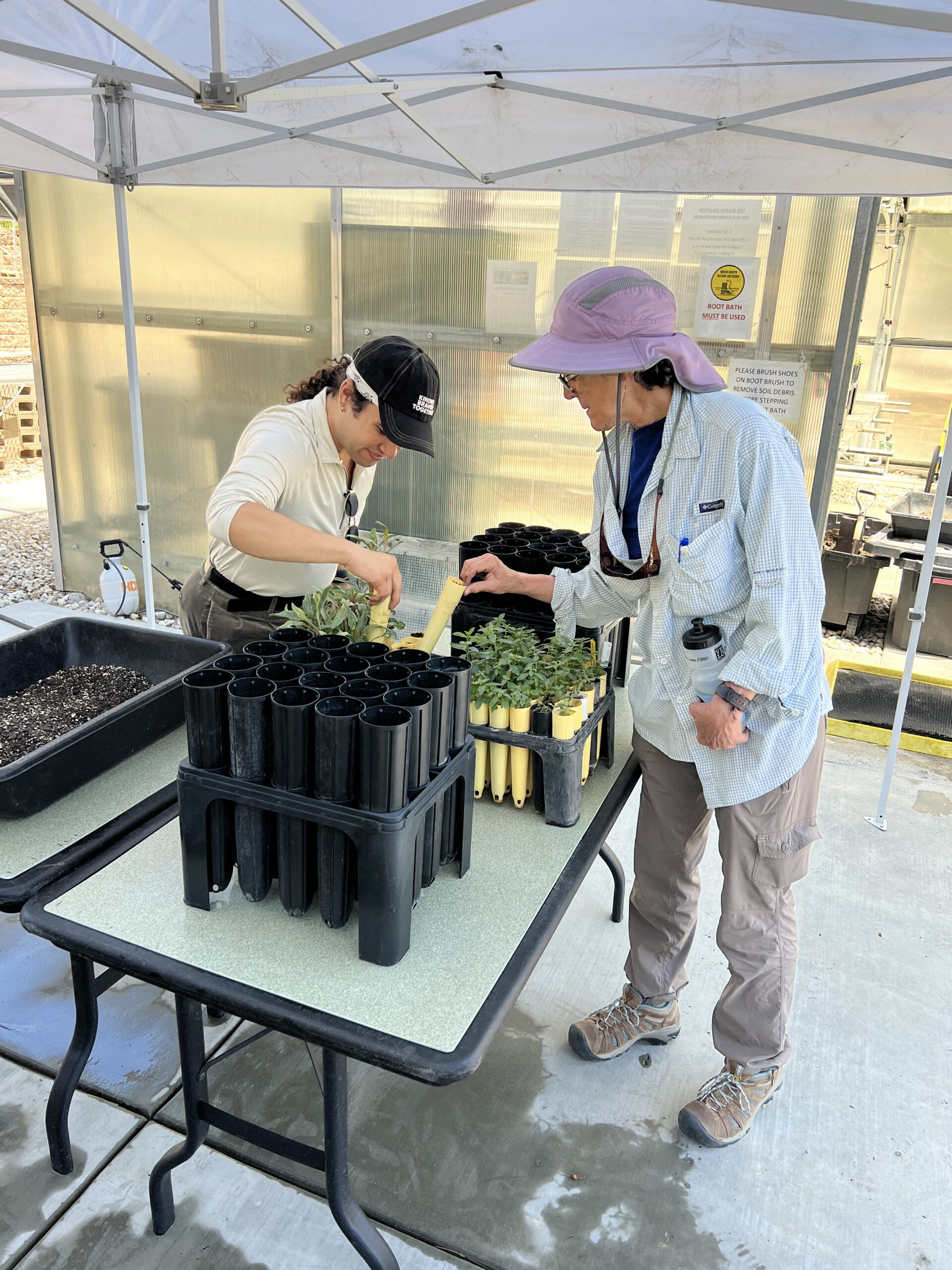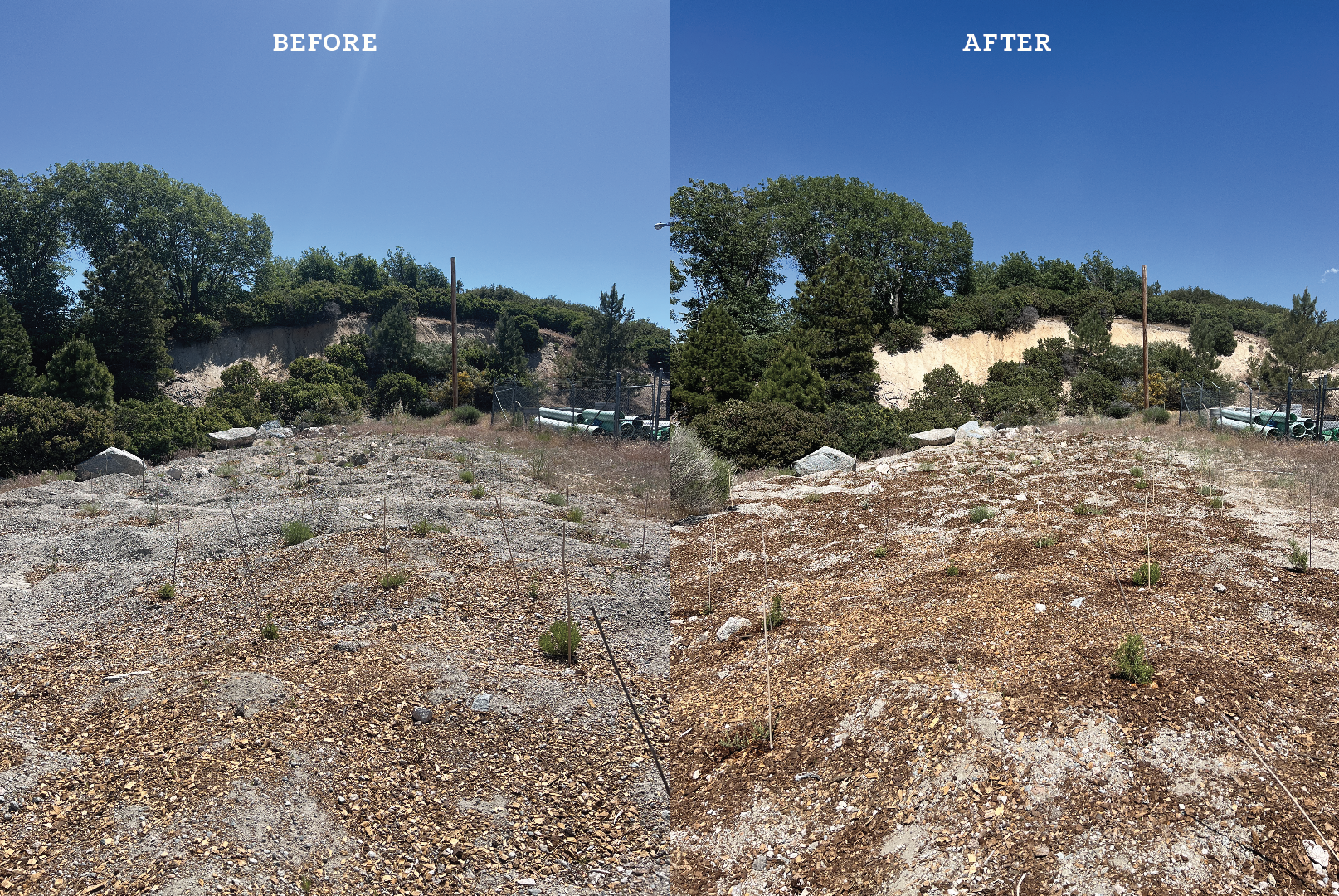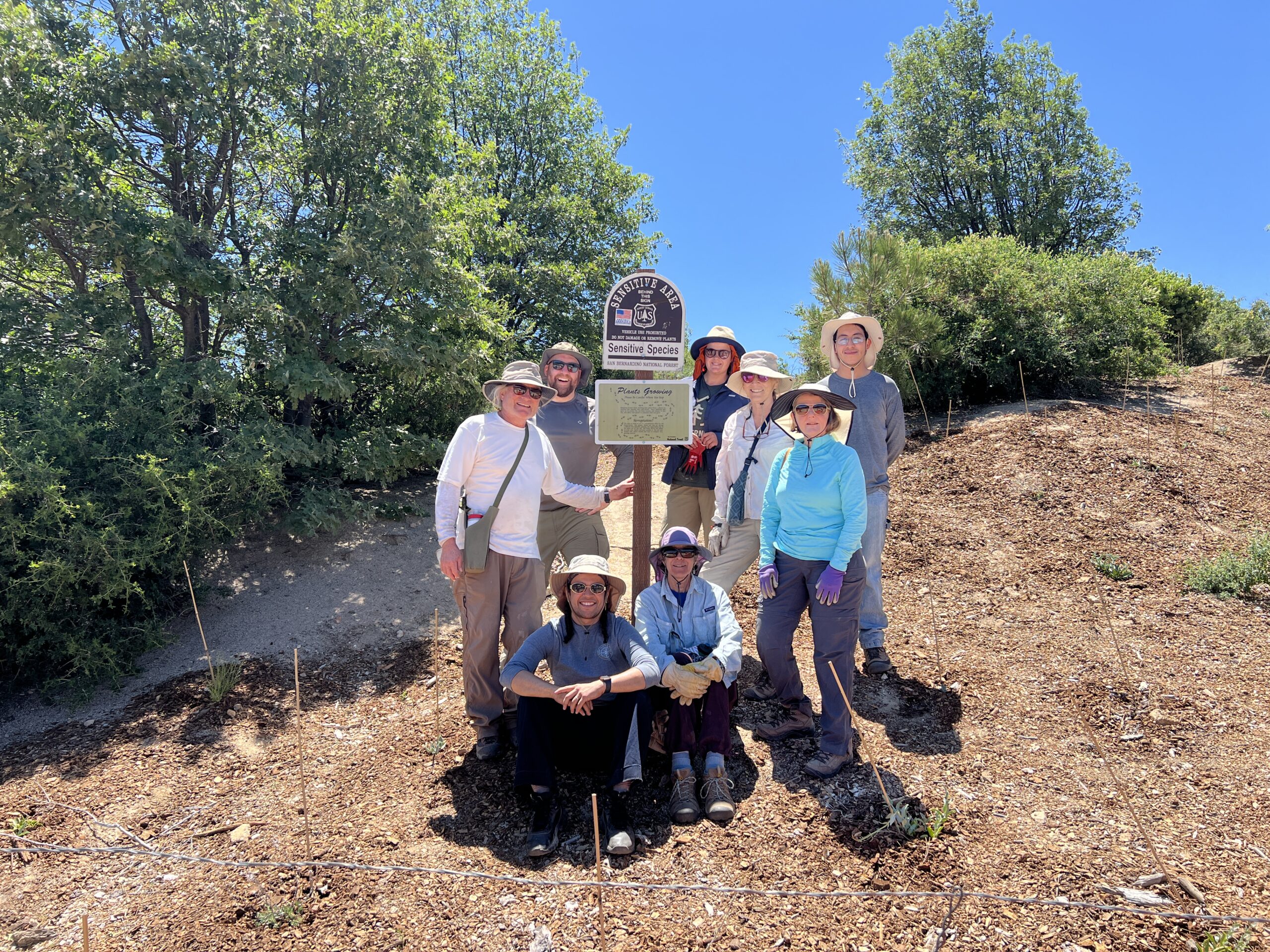Another month has passed working with the folks here at the San Bernardino National Forest (SBNF). Time has flown, a testament to the fun I have had working in partnership with the Restoration team here. Despite the laughs shared in the field not every day has been a walk in the park, and this month was witness to a battle between us ecologists/botanists and the most angry non-native perennial herb one could imagine, Bull Thistle (Circium vulagre).
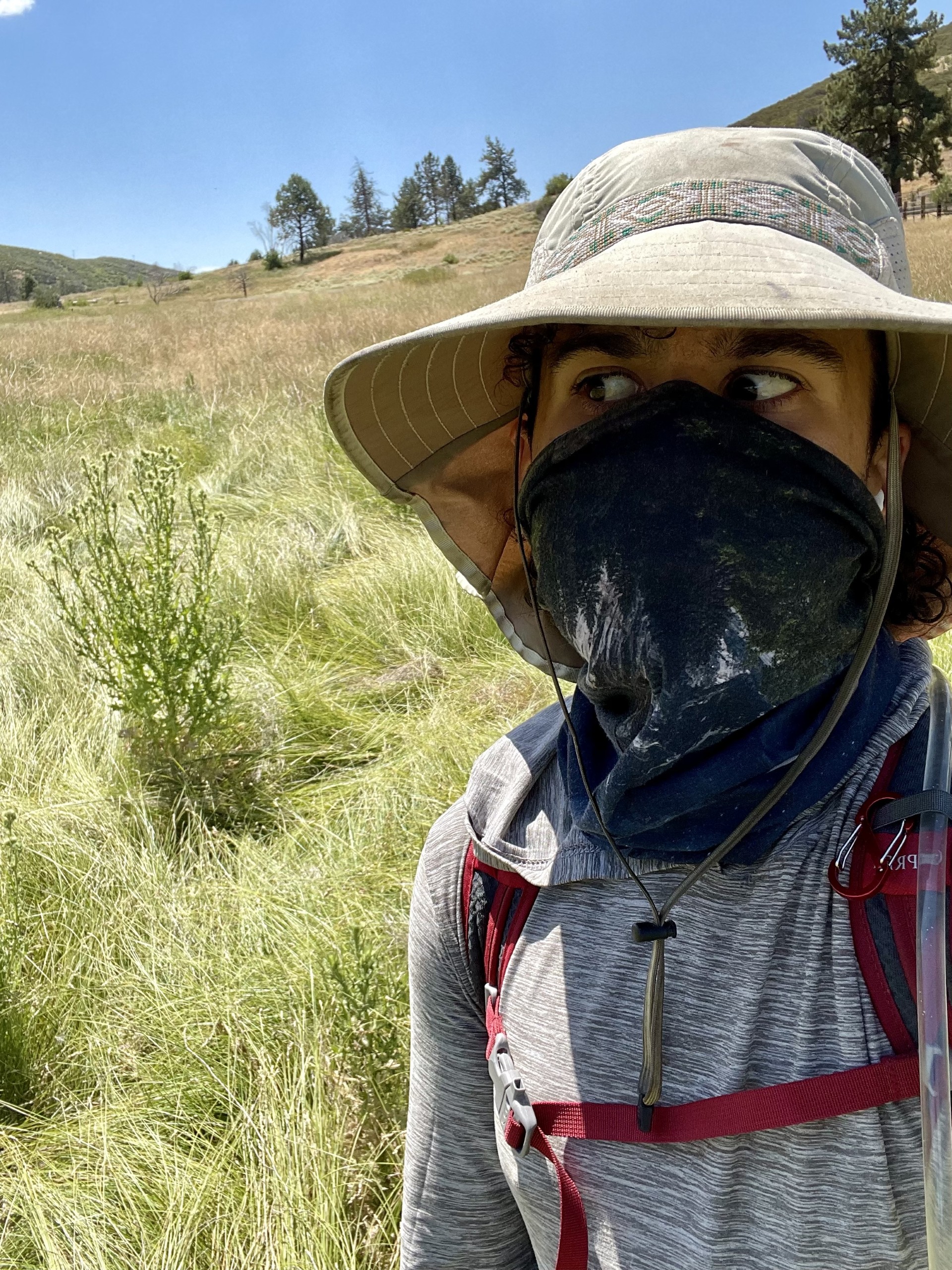
We ventured out into the San Jacinto Mountains near Idyllwild, California arriving at a site known as Johnson’s Meadow. Equipped with serrated shovels, leather gloves, trash bags, and clippers in hand to go up against the large spikes of the thistles which are non-native to this riparian meadow nestled into the Southern California mountains. This area was identified as ecologically important due to the presence of a threatened species Scutellaria bolanderi ssp, austromontana a perennial herb native to California and found most commonly in wetland areas such as in the ephemeral stream that runs through this meadow.

Johnson’s Meadow also happens to be a grazing pasture for a local farmer’s cows, and therefore exclusion fences were put up around the identified population of southern skullcap (S. bolanderi) in order to prevent the cows from consuming this threatened species as a tasty snack. There are additionally milk weed populations (Asclepias eriocarpa) at the meadow that rely on native pollinators which are often just as enamored with the thistles as they are with the milk weed.
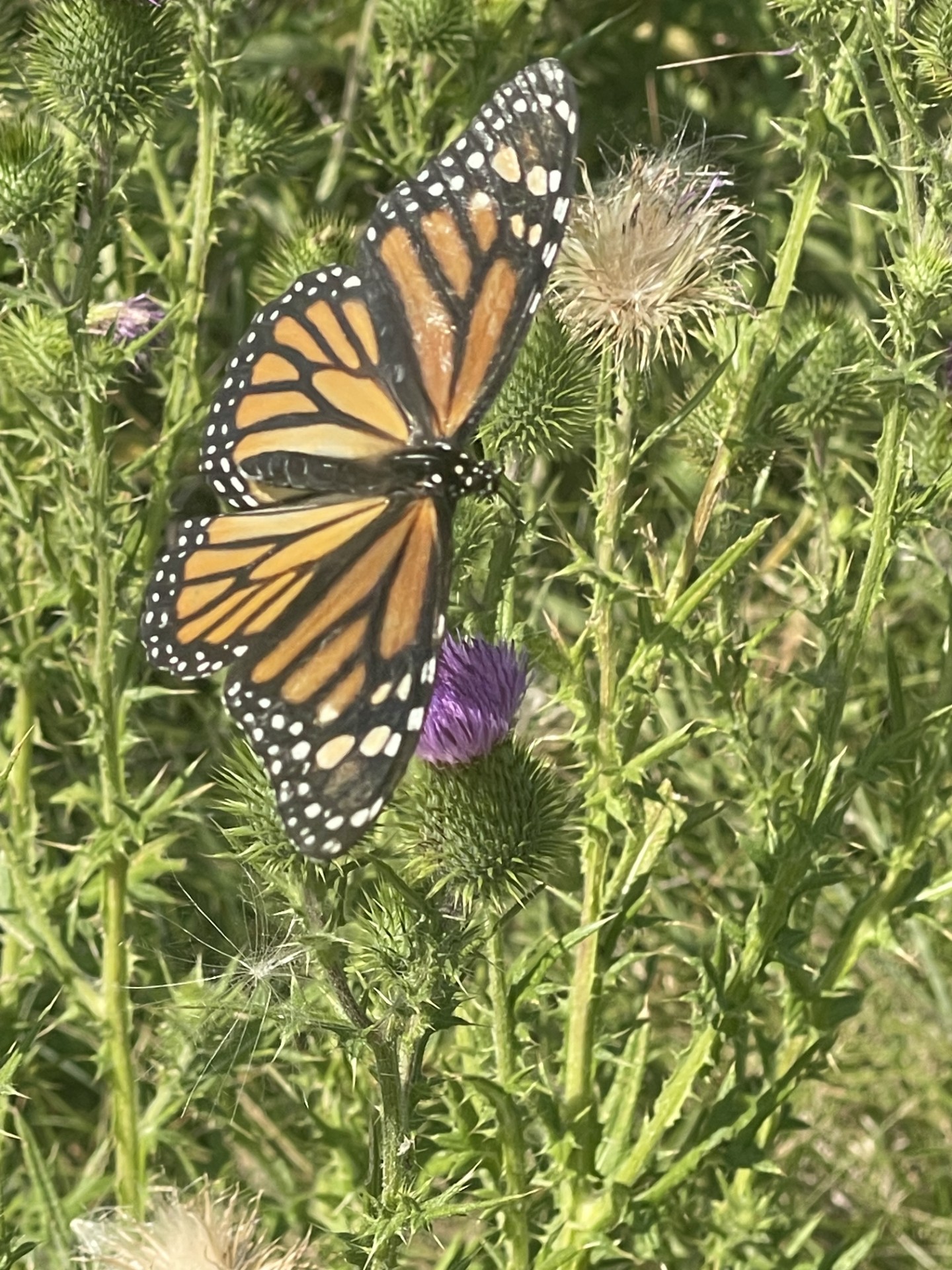
In order to combat the threat to local biodiversity that bull thistle poses, a group of forest service field techs, myself and Arturo with the CLM internship program, and Lance Woolley the district botanist for the San Jacinto side of the SBNF joined forces on a 3-day weeding spree. The meadow was full of tall, spiky thistle plants peeking up above the dense grasses and native California wild rose (Rosa californica) that filled much of the area. When we came up upon a thistle plant we first had to check if any of the flower heads had bloomed or gone to seed. If they had even bloomed (the purple puff sitting on top of that green spiky ball at the end of each stalk) we had to clip the flower head and place it into a trash bag for removal from the area. If the flower head had already gone to seed we did our best to remove these carefully without releasing the wind dispersed seeds into the surrounding areas. This process was difficult on its own due to the large spikes that cover every inch of a bull thistle from the stem, to the leaves, to the flower head. These spikes were often large enough to pierce straight through our pig-skin leather gloves. The only safe spot to grab a bull thistle is from the underground root once you’ve wrenched the sucker out of the ground. The process was made even more difficult due to bull thistles seeming preference of growing either next to huge patches of California wild rose (R. californica), stinging nettle (Urtica dioica), or if you are really lucky you can get the trifecta of all 3 pressed up next to each other!
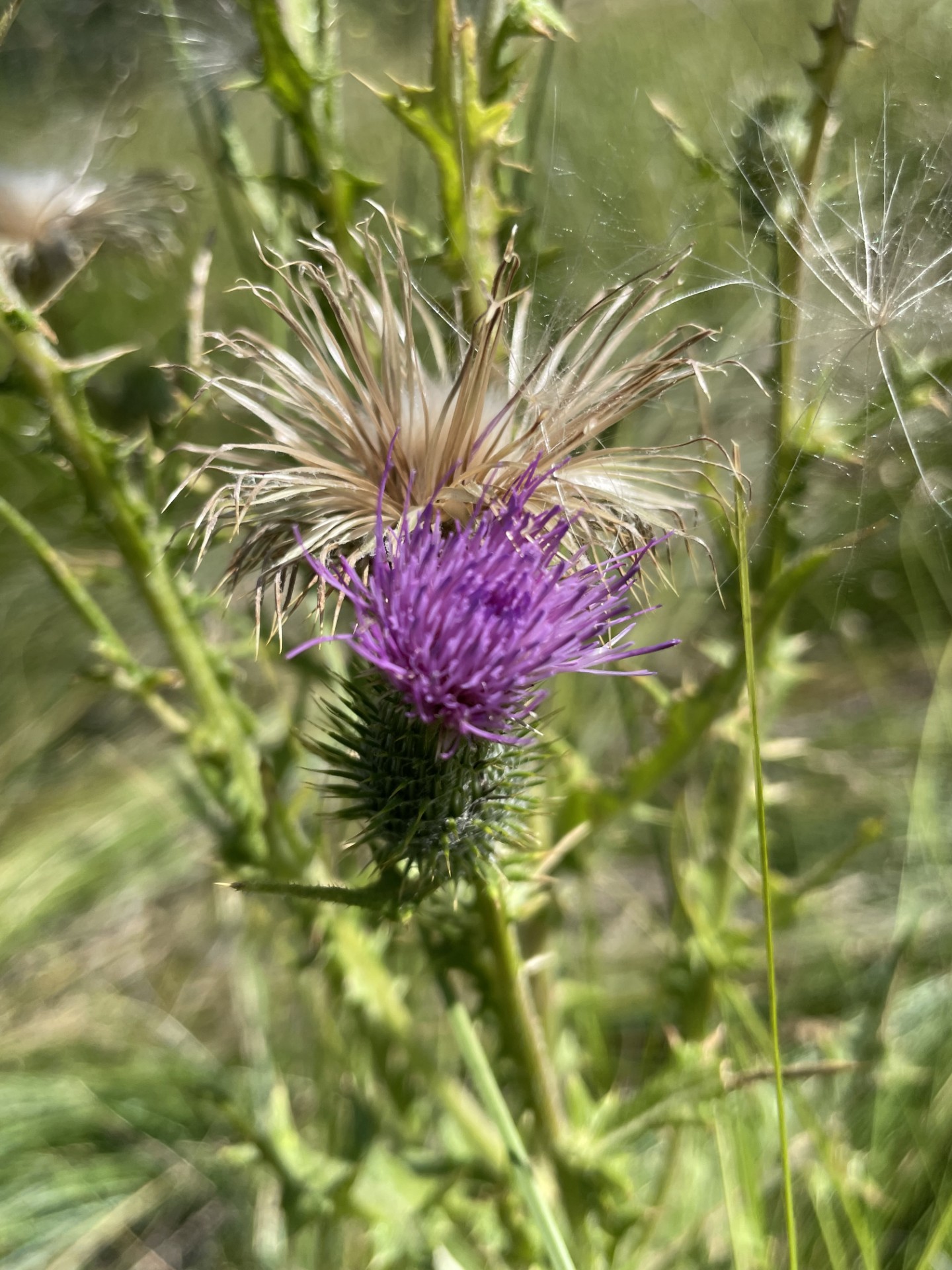
In total after 3 days of work and a crew of forest service employees, interns, and a crew from the Urban Conservation Corps, we were able to remove the vast majority of the bull thistle biomass from Johnson’s Meadow. The population there had to have exceeded 500 and I wish we had kept an accurate count day to day of how many plants we removed but pulling thistle in the middle of July in Southern California is no joke, and we were lucky to remember our names at the end of the day let alone an accurate count. Regardless the district botanists Lance seemed to be pleased with our final result. The battle of the bull thistle ended with victory siding with California natives in Johnson’s Meadow primarily due to the intervention of people who care about conserving and protecting the diversity of our public lands! It was inspiring to look out and see how much we were able to make an impact, yet simultaneously it was daunting considering how many meadows just like this one exist that cannot be managed through human intervention. The battle of the bull thistle may have ended for this growing season in Johnson’s meadow, but something tells me the race for dominance between native and non-native species is just heating up.


